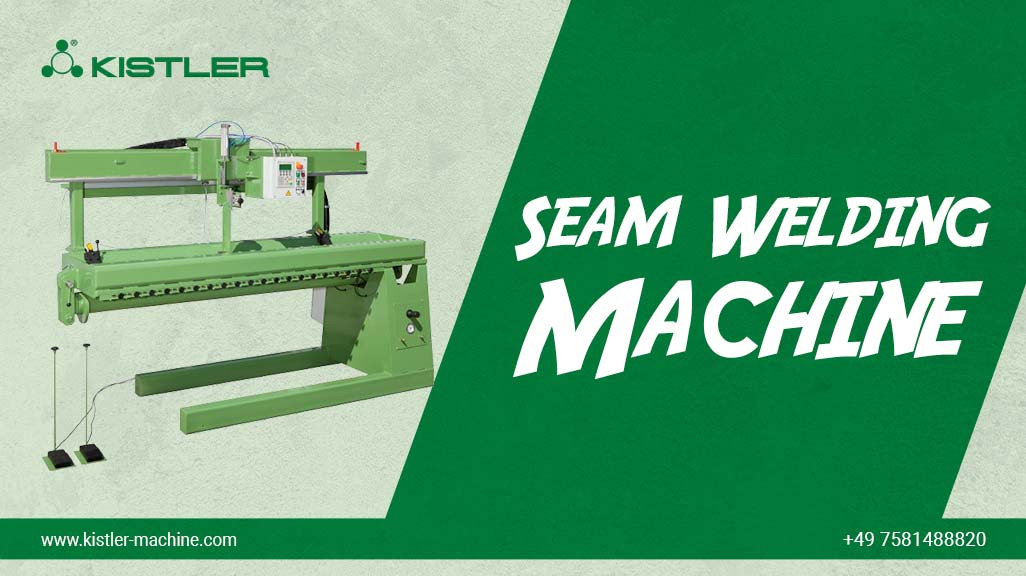
In opposition to projection and spot welding which comes under the Static welding, seam welding is facilitated by motion. Seam welding machines work by the principle of single or dual wheels that are driven by motor and rotate to generate several overlapping spot welds on sheets. The workpieces to be welded are fed into these rollers as and when the current passes through it. The materials to be welded are continuously connected by the heat generated from the electrical resistance of the electrode rollers.
Pulse Seam, Roll Spot and Continuous seam
In addition to the above mentioned basics, let’s understand how different are Roll Spot welding, overlapping seam welding and Continuous Seam welding. Seam welding are categorized into two: Pulse Seam and Continuous Seam. In pulse seam, we witness spot welds overlapped with a cool time. Since this process is so short, the weld spots are always seen joined together.In continuous seam spot welds are overlapped but with no cool time. Occasionally, pulse seam and continuous seam operations are seen in one machine. The choice of pulse seam and continuous seam are made based on the sheet material components and the appearance of the weld.
In roll spot welding, we’ll witness toggling of spot welds and cooling phase a number of times without the electrode being open while the welding process happens. Roll spot welding process is well explained with rim embossments at the time of brake shoe seam welding process. One of the additional and at the same time important components of resistance seam welding operation is the welding rod or electrode. A wheel that’s powered by a motor is responsible for its propulsion. This wheel opposes the driving force of the fixed rod. This configuration is best suited for metal plate attachment and can also be suitable for non-hermetic seam welding which is also referred as rolling resistance welding.
One of the greatest advantages of seam welding is its ability to generate clean welds without producing any weld fumes or gas in addition to the zero requirement of filler contact materials. The connecting materials which can be airtight, impermeable and liquid comes with numerous benefits. In comparison to spot welding, faster cycle times can be achieved by seam welding.
Seam welding process is very repeatable and fully automated. Seam welding machines help to enhance the efficiency of manufacturing with their capability to generate both single and parallel seam welding at the same time. In seam welding, the overlapping areas can be more accurately adjusted. Seam welding process does generate weld seams that are more durable and stronger than the sheet metals. Hence this technique is mostly preferred in sheet metal fabrication.
While counting on the advantages, seam welding has its own disadvantages as well. Resistance seam welding helps form a straight line link but the roller is not capable of forming more intricate curved welds.Welding Is restricted in inside areas as the wheel electrodes cannot reach the component. In addition, attachment of metal plates more than 3mm is not possible for this process. Also, there is no guarantee for the quality of the weld unless it is operated by skilled welders due to the high speed of the roller. The seam welding machines come under the costly side as well on top.
One of the important applications of seam welding is in the process of assembling the fuel tanks since it is very useful in the wedding of liquid-tight components. Seam welding machines can also be utilized to weld vessel parts that’s required to be fully airtight or watertight. Even though other welding processes are also good at generating these seals, seam welding is seen to be the best. In addition to the tight sealing, seam welding processes are good at producing clean welds. Seam welding finds its application in refrigerators, exhaust system components, oil transformers, aircraft tanks and so on.
Seam welding has its application also in tubes and pipes. This is due to the property of resistance seam welding where fusional metals are not required in the welding process. Since there are no weld beads, the aesthetics of pipes and tubes are not ruined. Seamless joints are produced in this welding process and these welding is mostly done on stainless steel, magnesium and nickel alloys.
Conclusion
As a customer of Kistler Welding , you are sure to take the advantage of their welding know-how irrespective of the welding machine you choose. At Kistler, the welding machines come with automatic features. They also assist you in conclusion with a complete solution. Kistler will help you with all the perfect machines like seam welding machines, robotic welding machines, positioners, rollers etc.